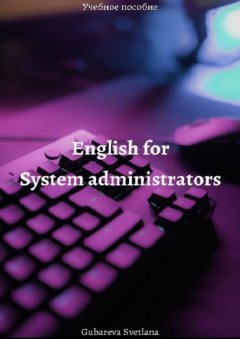English for system administrators

© Светлана Алексеевна Губарева, 2023
ISBN 978-5-0060-6585-7
Создано в интеллектуальной издательской системе Ridero
Foreword / Предисловие
Данное учебное пособие предназначено для начинающих и практикующих системных администраторов, инженеров облачных сервисов и девопс инженеров с языковым уровнем А2.
Цель – обеспечение технических специалистов лексическим и грамматическим минимумом, необходимым для понимания терминологии, принятой в профессиональной среде на международном уровне, чтения и перевода текстов профессиональной тематики, а также выработки коммуникативных навыков.
Каждый раздел сопровождается списком слов и кратким списком целей. Упражнения предполагают индивидуальную работу.
Памятка для самостоятельной работы:
1. Выполняйте задания в юнитах по порядку;
2. Внимательно читайте формулировки заданий;
3. Ответы на тренировочные упражнения стоит смотреть после того, как задание полностью сделано;
4. При возникновении трудностей грамматического характера проанализируйте сначала, почему вы приняли решение дать именно такой ответ, далее посмотрите и попытайтесь понять ответы. Далее перечитайте правила и перепроверьте себя еще раз. Это поможет в дальнейшем не допустить повторения ошибок;
5. Используйте рефлексивный блок Now you know после прохождения юнита или при возникновении трудностей с лексикой. Отмечайте пункты, которые вы поняли и изучили, а также выписывайте и тренируйте новые слова дополнительно. Для этого можете использовать метод «карточек» (на одной стороне английское слово – на другой его перевод);
6. После прохождения всех юнитов сделайте итоговый тест. При возникновении сложностей с лексикой или грамматикой вернитесь в соответствующий юнит для повторения.
Unit 1. Computers
1. Answer the following questions:
– What devices do you use?
– What are the components of a hardware of your device?
– Do you want to change your device to the new one? Why?
2. Look at the picture and name the computer items that you see:
